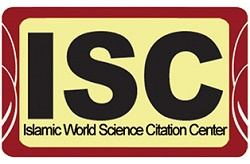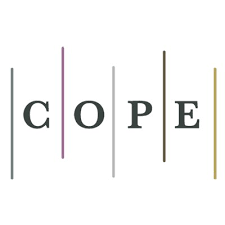Identifying laxity factors in moving towards emerging innovations (Case study: government organizations)
DOI:
https://doi.org/10.59615/ijie.3.2.39DOR:
https://dorl.net/dor/20.1001.1.27831906.2023.3.2.5.3Keywords:
Innovation management, laxity factors, government organizations, novel and emerging innovationsAbstract
Background & Purpose: The literature on novel and emerging innovations has typically focused on describing the hard and technological levels. The aim of the current research is to identify the effective factors in stagnation or uncontrollable delay in the movement of government research organizations in the direction of new and emerging innovations.
Methodology: In terms of philosophy, interpretation and positivism, and in terms of the type of goal, in the category of applied research and research strategy, in the qualitative part, it has used thematic analysis with an inductive approach, and in the quantitative part, the method of partial least squares has been used. The data was collected in the qualitative part using in-depth semi-structured interviews with experts and in the quantitative part of the statistical population of employees of government research organizations, 269 samples were selected as statistical samples using Yamane's formula. In this research, a researcher-made questionnaire was used to collect data, and the technique of hierarchical component models using the partial least squares (PLS) method and SmartPLS4 software was used.
Findings: Based on the analysis of the textual data of the interviews, after the integration of 148 primary identifiers, 35 basic themes, 7 organizing themes and 3 overarching themes were identified.
Conclusion: Lack of supportive culture as the most important cause of lakhti Hanban, including cooperation and working group, fostering a culture of teamwork, sharing ideas and views, not valuing organizational culture, not encouraging the owners of innovative ideas and views, have formed structural indicators of the lack of supportive culture.
Downloads
References
• Arranz, N., Arroyabe, M. F., Molina-García, A., & Fernandez de Arroyabe, J. C. (2019). Incentives and inhibiting factors of eco-innovation in the Spanish firms. Journal of Cleaner Production, 220, 167-176. https://doi.org/https://doi.org/10.1016/j.jclepro.2019.02.126
• Boyatzis, R. E. (1998). Transforming qualitative information : thematic analysis and code development. Sage Publications Thousand Oaks, CA.
• Chen, J., Yin, X., & Mei, L. (2018). Holistic Innovation: An Emerging Innovation Paradigm. International Journal of Innovation Studies, 2(1), 1-13. https://doi.org/https://doi.org/10.1016/j.ijis.2018.02.001
• Chiaroni, D., Chiesa, V., & Frattini, F. (2011). The Open Innovation Journey: How firms dynamically implement the emerging innovation management paradigm. Technovation, 31(1), 34-43. https://doi.org/10.1016/j.technovation.2009.08.007
• Clausen, J., & Fichter, K. (2019). The diffusion of environmental product and service innovations: Driving and inhibiting factors. Environmental Innovation and Societal Transitions, 31, 64-95. https://doi.org/https://doi.org/10.1016/j.eist.2019.01.003
• Delgado, R., Stefancic, J., & Harris, A. (2023). Critical Race Theory, Fourth Edition: An Introduction. NYU Press. https://books.google.com/books?id=tqCUEAAAQBAJ
• Fagerberg, J., Martin, B. R., & Andersen, E. S. (2013). Innovation Studies: Evolution and Future Challenges. OUP Oxford. https://books.google.com/books?id=I29pAgAAQBAJ
• Farmer, S. M., Lorenz, M. P., & Ramsey, J. R. (2023). The innovation paradox of global work: Does cultural tightness shape or constrain innovative behaviour? Journal of Occupational and Organizational Psychology, n/a(n/a). https://doi.org/https://doi.org/10.1111/joop.12463
• Hair, J. J. F., Sarstedt, M., Matthews, L. M., & Ringle, C. M. (2016). Identifying and treating unobserved heterogeneity with FIMIX-PLS: part I – method. European Business Review, 28(1), 63-76. https://doi.org/10.1108/EBR-09-2015-0094
• Halaweh, M. (2013). Emerging Technology: What is it? Journal of technology management & innovation, 8(3), 19-20. https://doi.org/10.4067/s0718-27242013000400010
• Hiwatari, T., Harada, F., & Shimakawa, H. (2023). Human Interaction and Emerging Technologies (IHIET 2023), Vol. 111, 2023, 102-109. Human Interaction & Emerging Technologies (IHIET 2023): Artificial Intelligence & Future Applications, 102. https://doi.org/https://doi.org/10.54941/ahfe1004014
• Mehrabi, G., & hematinejhad, m. (2023). Theoretical and Experimental Considerations of Designing a Formative and Reflective Measurement Model. Sport Management Studies, 14(76), 43-74. https://doi.org/10.22089/smrj.2020.8626.2946
• Mollanouri Shamsi, E., & Noruzi, K. (2023). Extracting the knowledge of networks in solving the innovative military bottlenecks of the Islamic Republic of Iran during the era of holy defense. Scientific Journal of Strategic Management of Organizational Knowledge, 6(1), 193-220. https://jkm.ihu.ac.ir/article_207920.html
• Noruzi, K., Hajihasani, s., Khatami, H., khatami, M. E. K., & Yaghoubalipour koundelaji, A. (2023). Examining Sardar Soleimani's military management innovations in the resistance front. Basij Strategic Studies, 25(97.2), 33-69. https://www.bsrq.ir/article_167402.html
• Pakgohar, A., & khalili, m. (2021). Investigation of sample size in qualitative sampling methods. Popularization of Science, 12(1), 270-297. https://doi.org/10.22034/popsci.2021.286809.1090
• Ringle, C. M., Wende, S., & Becker, J.-M. (2022). SmartPLS 4. Oststeinbek: SmartPLS GmbH. J. Appl. Struct. Equ. Model.
• Rotolo, D., Hicks, D., & Martin, B. R. (2015). What is an emerging technology? Research Policy, 44(10), 1827-1843. https://doi.org/https://doi.org/10.1016/j.respol.2015.06.006
• Samie, M. E., & Barati, F. (2023). The effect of knowledge management on the performance of technology commercialization with the mediating effect of organizational innovation. Knowledge Retrieval and Semantic Systems. https://doi.org/10.22054/jks.2023.70236.1538
• White, M. A., & Bruton, G. D. (2010). The Management of Technology and Innovation: A Strategic Approach. Cengage Learning. https://books.google.com/books?id=-bY8AAAAQBAJ
• YAMANE, T. (1973). Statistics. An introductory analysis. Third edition. Harper & Row. https://books.google.com/books?id=sl75MgEACAAJ
Downloads
Published
How to Cite
Issue
Section
License
Copyright (c) 2023 Khalil Noruzi, Mohammad Hossein Shadmanfar

This work is licensed under a Creative Commons Attribution 4.0 International License.










